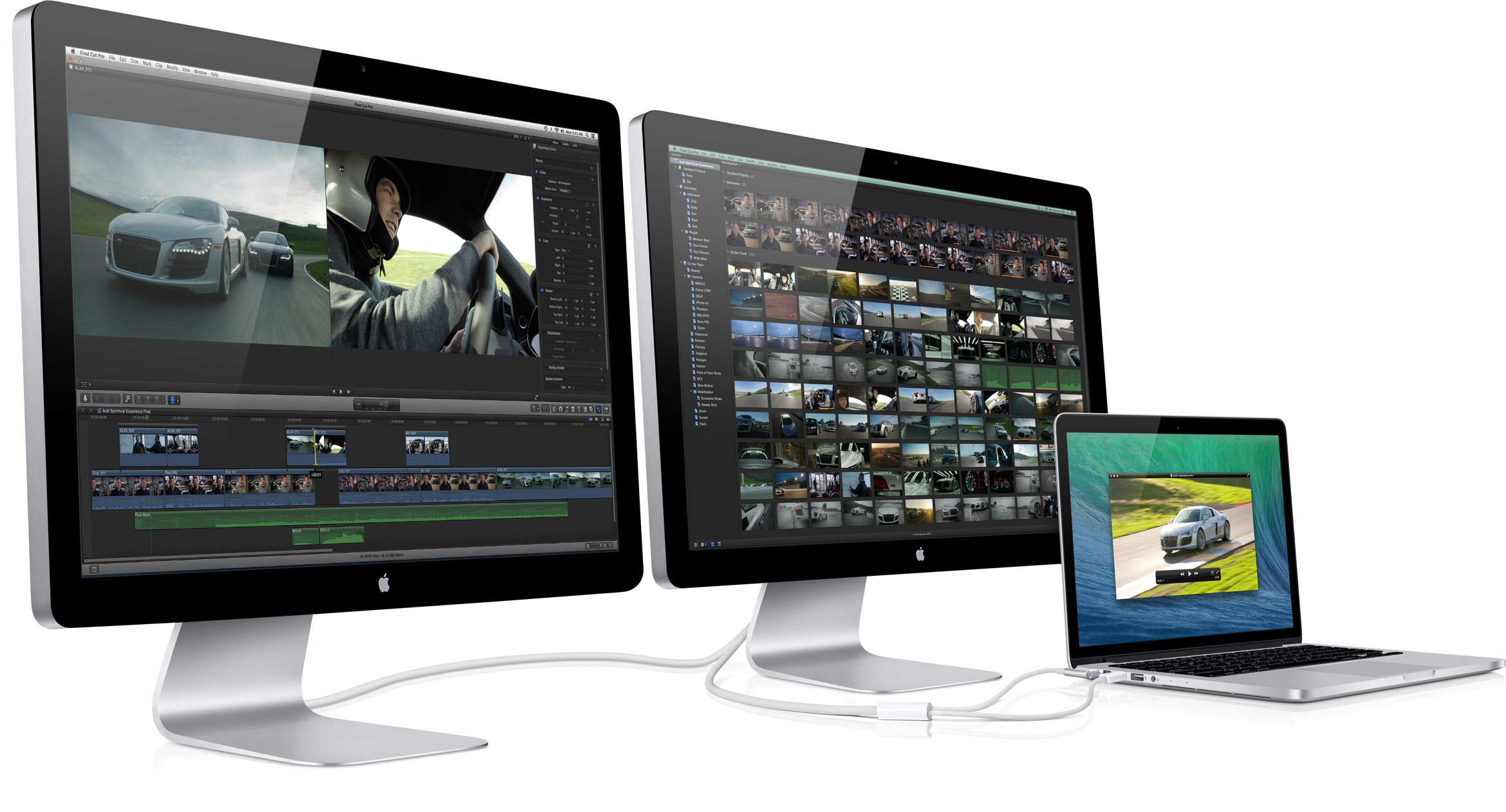Apple’s Thunderbolt Display launched nearly five years ago and it may finally receive its long-overdue upgrade soon. Web checks reveal that Thunderbolt Display stock is dwindling across Apple Stores around the world, including in North America, Europe, Australia and elsewhere. Furthermore, tipsters say that stock is not being replenished, suggesting new models might be introduced at WWDC.
“A reliable retail source informed us that the Thunderbolt Display has been out of stock for a month at all central and surrounding London stores, while a tipster claims that the 27-inch monitor has been pulled from sale, with stock ‘returned to warehouse’ at at least one U.K. retail store,” writes MacRumors.
As these shortages come conveniently ahead of WWDC 2016, which takes place in about two weeks, it’s possible that Apple might use some stage time during the WWDC keynote to announce the refreshed displays.
We imagine a next-generation Thunderbolt Display would feature Thunderbolt 3.0 and native USB 3.1 support and, of course, a major resolution bump pushing the current 27-inch 2,560-by-1,440 pixel screen to a Retina-friendly resolution of 5,120-by-2,880 pixels, effectively matching the 27-inch iMac with 5K Retina display.
This is one of the Apple hardware refreshes that I’m looking forward to.
I’ve owned a Thunderbolt Display for four years now and have nothing but praise to say about it. In addition to a massive 27-inch canvas and high-quality images, this display integrates a bunch of connectivity options, like built-in Gigabit Ethernet, three powered USB ports and a FireWire 800 port.
By connecting my MacBook Air to this display via Thunderbolt, any devices connected to the display’s ports becomes instantly available on my notebook. It’s basically an impressive display and a docking station in one device with stellar industrial design.
Guess what else might be in tow for WWDC 2016?
All-new AirPort base stations.
Source: MacRumors
